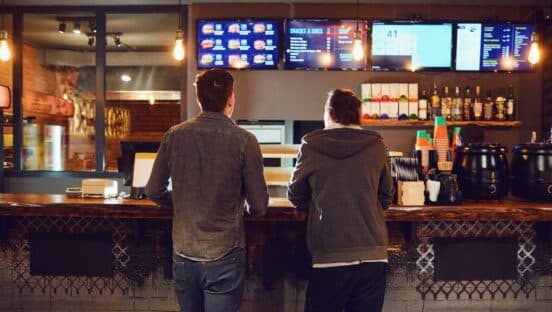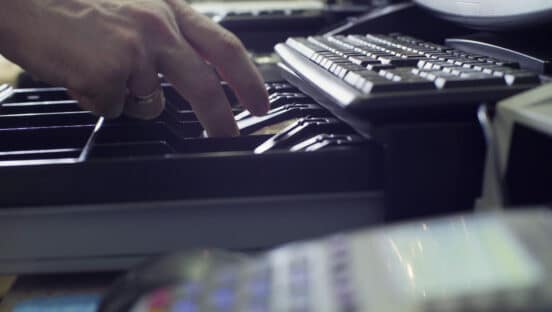Not only did health and safety guidelines across the nation change the ways restaurants did business in 2020, but growing consumer comfort with off-premises dining meant that many brands scrambled to make heavy technology investments that would support drive-thru, takeout, and delivery operations. While quick-service restaurants have adjusted to the new normal, questions remain about what the industry—and the technology that supports it—will look like in 2021.
Jason Graf, vice president of product management at Netsurion, a company that helps restaurants keep their networks secure, shares a few predictions for what the industry may see in the coming year.
1. Restaurants Will Invest in Existing Technologies
While technology advancements have driven major industry shifts in years past, Graf thinks more restaurants will try to catch up to the new status quo.
“There is no new, innovative technology that’s come out since we’ve been dealing with the pandemic,” he says. “Third-party delivery, contactless payment, and iPad line busting are not new, but because consumers are more used to online shopping and want to have less contact, restaurants have used them more. Brands that haven’t already used these technologies will soon see them as priorities and make heavy investments in them.”
Furthermore, leaders can rest assured these types of technology will still be in high demand in the future. Not only is it unlikely a vaccine will be distributed widely enough to have much impact on the industry early in 2021, but since quick-service has always centered on convenience, Graf thinks takeout and delivery will still be popular among consumers even after more regions allow reopening.
2. Digital Ordering Will Continue
Along with the rise of off-premises dining, digital ordering technologies have proliferated during the pandemic. Graf thinks this trend shows no signs of slowing.
“Whether you’re talking about places that used to do sit-down service or you’re talking about quick-service chains, app- and web-based ordering platforms are more popular than ever, and that will continue,” Graf says. “Additionally, now that restaurants have seen how effective digital menus can be, they are realizing how much money they can save by not printing paper menus or signage, so digital platforms are likely to see widespread use beyond the pandemic.”
However, one of the concerns that has risen out of the growth in online ordering is the inefficiency of integrating online ordering platforms with existing POS systems. Prior to the pandemic, online orders made up such a small segment of a restaurant’s volume that staff could easily work around the lack of integration. Now that online ordering is so dominant, Graf sees many brands investing in POS systems that offer more seamless integration with online ordering.
3. Network Connectivity and Security Will Be More Important Than Ever
With so many technology investments rolling out at restaurants, Graf says it’s crucial to make sure every location has secure Internet access at all times.
“Keeping mobile devices, third-party delivery platforms, and POS systems connected is now more important than ever,” Graf says. “Restaurants need to consider how stable their networks are and realize that DSL might be cheap, but it’s really past its heyday. And even once you have a good connection, you still need to invest in a backup network solution in case of a bad day.”
Meanwhile, he cautions that it’s equally as important to secure networks against cyber threats, and base-level security for wireless technology is a must.
“It remains to be seen what will happen with the pandemic, but it’s clear that technology has become an important part of the industry,” Graf says. “Reliable connectivity and network security will always be vital for restaurants no matter what the future looks like.”
To learn more about how you can prepare your tech stack for 2021, visit the Netsurion website.
By Peggy Carouthers













